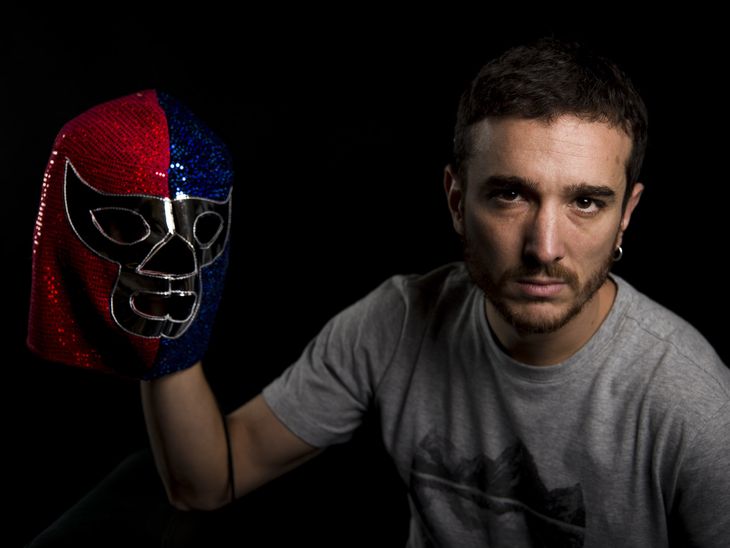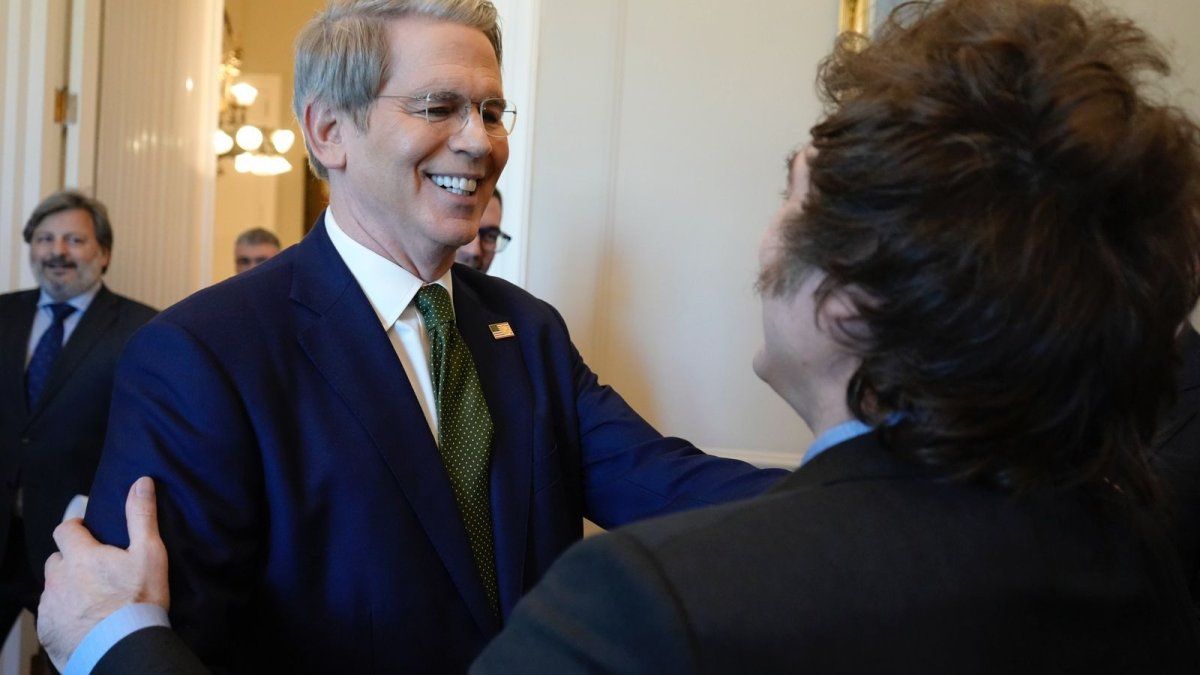“San Martín is very familiar to me, I grew up in their corridors. It is a unique service space where art can be expanded at risk, responsibility and resources for people to access extraordinary theatrical events at affordable prices,” says Emiliano Dionisidirector of “Samson of the Islands “, The recent piece of Gonzalo Demaría, Cervantes director, With a cast composed of Luciano Castro, Manuel Vicente, Vanesa Maja and Gonzalo Gravano, and the participation of singers Constanza Díaz Falú and Fernando Ursino.
He debuts on Saturday at 20.30 in the Casacuberta room of the San Martín Theater and stages the story of Samson, a very popular Catch fighter but sick and retired who must return to the ring to force. It is the Malvinas war and the military government needs Samson. At the insistence of his wife, the decadent character agrees to face a younger rival.
The costume design is Jorge López, The lighting design is Lucia Feijoóthe scenery design is Cecilia Zuvialde And the original music and musical direction is from Manuel de Olaso. We talked with Dionisi.
Journalist: What did you find in this Demaría text?
Emiliano Dionisi: A powerful text, which I liked from the word one to the end, that builds a fable in a reimagined past.
Press_sanson of the Islands-Foto Carlos Furman4.jpg
Emiliano Dionisi directs Gonzalo Demaría’s work.
They have not offered me something so solid, I admire Gonzalo Demaría for his production, his versatility, his intelligence, responsibility and humor in such complex places.
Q.: The work evokes the Malvinas War from Catch, how is that?
ED: This is the possibility of healing an old wound from the theater, Malvinas is such a strong wound for what it meant, because it was not a war was a massacre, it was a great smoke bomb to distract us at the expense of our kids. A whole generation and broken families, the Malvinas brand that would demolish this 24 -hour transmission by Malvinas where money never arrived was so painful. And put a kind of hero come unless the possibility of changing the course of history is presented. In a very painful way and play it tells people what is happening. Putting a little hero that makes a gesture of justice is exciting and celebratory.
Q.: The work follows the story of a fighter, a character who lately appeared in several works, from “Gayola in Paris” to the unipersonal of Luciano Castro, why?
ED: It happens with the themes that when one begins they begin to repeat. It is something that is in the air, in the collective unconscious or in the aesthetics, it is spectacular to see that there are stories that of different points of view begin to play and we can investigate them from different universes. In this case, the fight, the boxers, this sport with blows, is something that catches my attention but particularly here is the Catch, half boxing half theater, a great sports theater, a mixture to which the struggle between good and evil is added, which after all is the great argument of the universal theater. I never thought I was going to do something with this issue, Catch is something that I never liked, it seemed too heterosexual until I went to Mexico and they invited me to the struggles. We went and fell in love with this physical theatrical thing almost from the world of the circus and what people live, which believes that what happens there is real, that there is a good and a bad, blows, an unexpected turn and people get excited and shout and celebrate and hug. The Catch is a very ritual theater. I never miss the opportunity to go to the struggles in Mexico.
Q.: How do the vintage air recreate?
ED: It is spectacular, everything happens on the old public TV, a TV study but that could be a hangar, spray, soundproofing, where it is not heard what happens, that analogy with the detention centers and that there is a speech towards the outside and a story seemed tremendous. Back to that place where I imagine that people will have embraced a hope of being better, to get ahead with a kind of external enemy when the enemy was inside. Both to rethink, hug us and understand above all today.
Q.: What does it mean to do the work in San Martín?
ED: It is a very special place, I am in those corridors from a very young age, 26 years ago when I debuted in “Galileo Galilei” directed by Schumacher, then I was as an actor then I say that the halls are like my grandmother’s house, I grew up inside, those who work in hairdressing or machinery ask me how my old people are, it is very familiar and dear that place. It is a service so that people do not feel that art is far, or marked by market laws, of what can be paid or not. All of us who are State agree that in addition to health and public education we are better if we have public culture. We celebrate our own and foreign authors, we explore our artistic realities and access that. People have the right to feel crossed and rethink by art and artists. That makes us better. In San Martin very small things are done in the smallest and immense room in the big ones. We are giving the public to see something that would be very expensive or perhaps not even do, because they are difficult to solve. The public deserves to see great theatrical experiences, great scenographies and music composed for the occasion and changing rooms with passion. The Argentine theater represents us, it is a mirror for us. Having it with this magnitude is something I feel pride.
Q.: How do you see theater and culture?
ED: Buenos Aires is always a very thriving city, with a spectacular offer of theaterists, with the opportunity to see theater and events from Monday to Monday at any time for all pockets. People are less and less and we are worried about asserting our work, professionalization improves what we do, we are within a difficult context. We will go ahead, we will resist, we need support. Some opportunities are being given to rethink how we produce, it is nice to understand that we cannot produce alone but from the great community we are. We cannot give ourselves to the laws of the market that asks to produce more and cheap. We are to build from the emotion spaces to ask us questions. Theater is a service and we have to make it come in a powerful way.
Q.: What can you explain about the questioned subsidies to cinema or theater?
ED: At 19 I put all my savings in a work and it was flu A, the poster and lost everything. I could do the second work thanks to a subsidy but I would not have done it and today I would not be here with this production possibility. These aid are small for state but huge and important for artists. I defend that these kids can do their first jobs and find the way to professionalize.
Source: Ambito
I am an author and journalist who has worked in the entertainment industry for over a decade. I currently work as a news editor at a major news website, and my focus is on covering the latest trends in entertainment. I also write occasional pieces for other outlets, and have authored two books about the entertainment industry.




